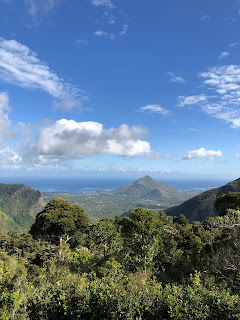2021 Greener Year List Rules
It's a common birding dilemma. Do you do a patch year list? But then what if you want your list to count the Cirl Bunting you see on holiday? So instead you do a UK year list. But then where's your reward for finding that Osprey over your patch, when you can see them easily at Rutland Water?
My 2021 Greener Year List hopefully combines the joys of both. Allowing you to count all the birds you see but rewarding you for finding them closer to home. If 2020 taught us anything in birding it was of the joys that can be had in staying local, with many birders now opting to do this on a permanent basis. With this 2021 GYL, local birding is, rightly, weighted higher and rewarded but a trip further afield still counts towards your list. This is a list which reflects the growing movement to limit birding carbon footprint and engage in greener birding.
The Rules:
The Points: (all distances are as the crow flies)
Walking/cycling from home: 30 points
If driving/using motorised transport:
Within 5 miles: 20 points
Within 10 miles: 10 points
Within 20 miles: 5 points
Within 50 miles: 2 points
Elsewhere: 1 point
Sites on the boundary:
These radii have been chosen so that you hopefully need not differentiate with birds seen within any one site i.e. a site is unlikely to straddle two regions (especially at the larger distances) so all birds seen on a single site visit can be counted for the same number of points.
If a "small" site (roughly less than 3 miles across) happens to straddle the boundary of a point zone then it can be counted as being within the closer zone.
Otherwise, a "large" site (over 3 miles across) which straddles a boundary should be separated into smaller pieces, any of which still straddling the boundary can then count as a "small" site above.
Some areas are better than others:
Hopefully these rules will go some way to even the playing field with people living on the coast (they will lose some land from their radius because of the sea, but they get to live by the coast!) Whereas hard-done-by inland birders get more available land for each point radius. Of course, there is no real way to truly level the playing field if you happen to live 2 miles from Titchwell, but unfortunately that is just the way with local birding.
Students & second homes:
People, such as students like myself, sometimes live in more than one place during the course of a year. These people should still be rewarded for birding locally in this area. Therefore, you may change what you count as your 'home' as long as you remain (or plan to remain) living in the new location for at least a month. You may have up to 3 such 'homes' during the course of the year.
Updating species:
In traditional UK year listing, if you saw a Goosander 10 miles away on New Years' Day that would be it ticked for the rest of the year. There'd be no point in ticking it again. I've always found this concentrates the fun of year listing towards the start of the year. With the GYL, you can improve your year list total not only by seeing new species but by finding ones you've seen closer to home. If you see a Goosander in March 5 miles away then you'd update Goosander to be worth 20 points on your list not 10. And Goosander is still not ticked off for good, until you've seen one a walk away from home and got your full 30 points.
How to record:
I'd recommend using Microsoft Excel, with a column for species and a column for the closest sighting (this doesn't need to be accurate as long as you know which point zone it was in) and a column for the number of points this is worth. Then sum this final column.
I have made a template, that will count the points you have scored.
My point zones are shown above. I'll get 15 times as many points for finding an Osprey flying over my garden than I would for seeing them nesting at Rutland Water, and it's certainly at least 15 times more difficult!




Comments
Post a Comment